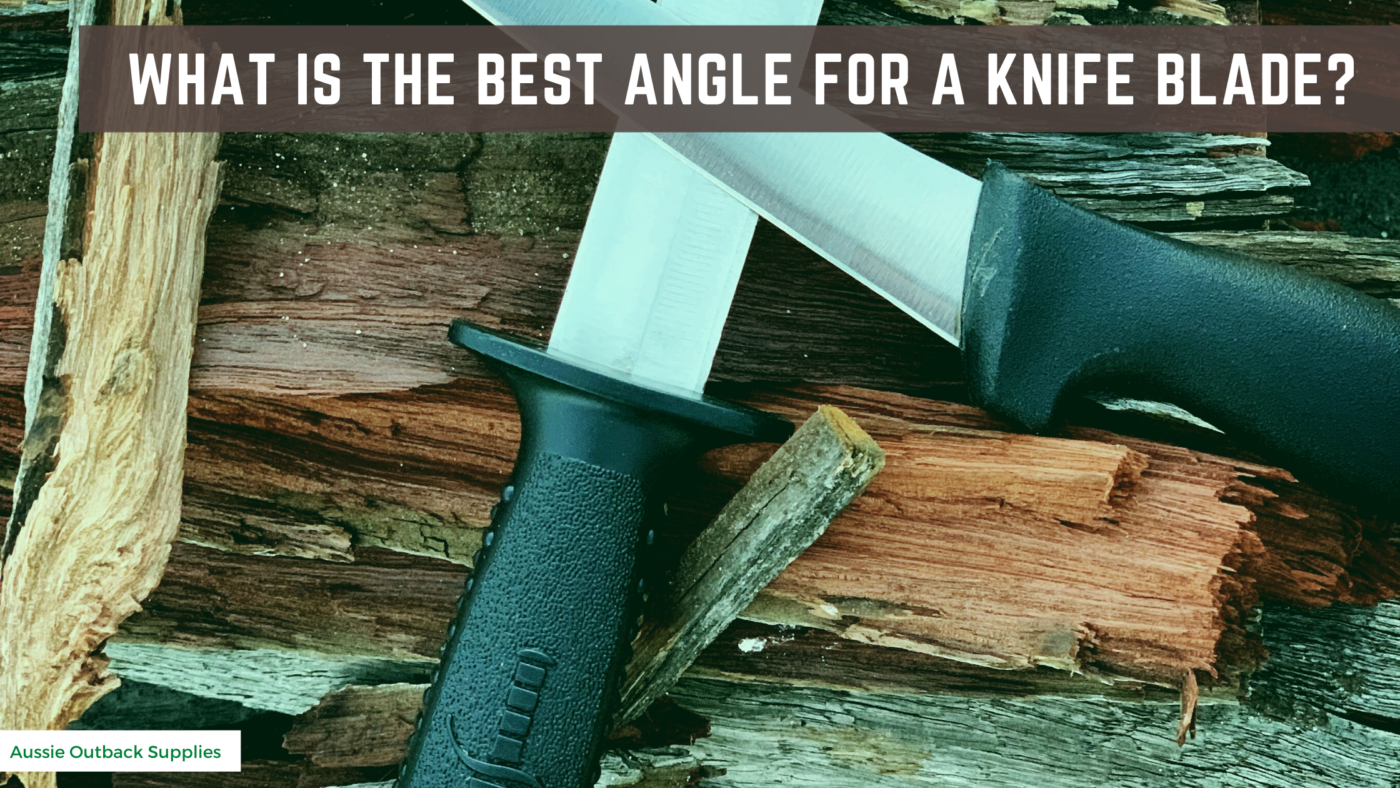Butchering, Camping, Fishing, Hunting
What is the best angle for a knife blade?
There is a lot of controversy around knife angles as this comes down to personal preference however there are some key rules that can help you get the right angle to suit your needs. Knife angle relates to the type of knife and the task you will be using your knife for.
Knife angles will generally be between 15 and 30 degrees. When the knife angle is shallower around 15 degrees there is not much strength behind your cutting edge and this leaves your knife exposed to be chipped or damaged if used to cut around hard objects like bone. whereas when your knife angle is closer to 30 degrees this is more suited to “heavy duty” applications such as survival tasks or chopping wood etc.

Kitchen knives will start at 15 degrees as these knives are not generally used to cut around any bone or any food products that can chip or damage your cutting edge easily, they can range up to about 20 degrees depending on the application of the knife.

Working knives such as fishing knives, butchering knives, hunting knives and meat workers knives all fit under the same broad guideline where they can start at about 20 degrees with more strength behind the blade than kitchen knives as these knives will be working close to bone and joints in most cases. These knives can be sharpened closer to 25 degrees the more exposed to bone and Cartledge they are.

Whilst we are in the 20 to 25 degree section it is worth mentioning that most pocket knives and lock blade folding knives will fit into this range as well following the same above guideline.

Utility knives and Bush craft Survival knives will generally fit into the 25 to 30 degree knife angle range, all be it both of these knives can be done at both angles. The Utility knife will generally complete tasks such as food preparation through to light bush craft tasks and is more suited to a knife angle closer to 25 degrees. Survival and bushcraft knives would usually be a heavier blade and are generally sharpened to a wider angle due to requiring more strength behind the cutting edge.
Not too many blades would require an edge over 30 degrees, however an example would be if you are putting excessive stress on your machete by continual cutting through woody vegetation. Remember the larger the angle the more strength you will have behind your cutting edge.

Not too many blades would require an edge over 30 degrees, however an example would be if you are putting excessive stress on your machete by continual cutting through woody vegetation. Remember the larger the angle the more strength you will have behind your cutting edge.

Which ever way you decide to go with your knife blade angle, it is recommended to use a good quality knife sharpener. Using something such as the EZEsharp Blade Sharpener takes the guesswork out of sharpening – every time! The result is an edge so sharp and strong the professionals acclaim this a superior method of sharpening.
Click the image below to see the EZESharp Blade Sharpener and everything about it.


